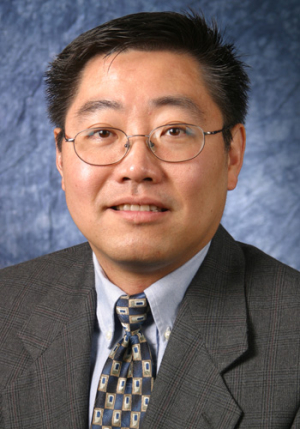A device being developed by a University of Houston professor could boost the cure rate for lung cancer by arming doctors with the ability to more effectively target these cancer cells as a person breathes.
With a $100,000 grant from the Methodist Hospital, Ji Chen, an associate professor of electrical and computer engineering, is constructing the magnetic tracking system. It can be used with existing Tomography Hi Art and Four-Dimensional Computed Tomography machines to offer real-time information on a lung tumor’s location so radiation can be concentrated there and damage to surrounding healthy tissue can be reduced.
“Lung cancer has a very low cure rate because during the X-ray, the patient is breathing, so the lung moves—making it very difficult to track the cancer cell,” said Chen who is partnering with researchers at Methodist on the creation of the system. “This system really would allow more targeted treatment to better fight the cancer with fewer side effects for the patient. If it is successful, it could significantly increase the cure rate for lung cancer.”
The device he is developing will work with the two-tomography systems, which integrate traditional CT imaging with radiation therapy to treat cancer. Resembling CT scanners, each require a patient lie on their back as a scanner spins around them to create a 3D image of a patient’s body just prior to beginning radiation. While both systems provide detailed images that allow doctors to more accurately focus a radiation beam on a tumor—neither can track its movement in real-time.
That could all be changed if Chen’s system were used with the machines. His tiny electromagnetic transponder—implanted in the lung near the site targeted for treatment—would make it possible to track tumors that move as the lung inflates and deflates with each breath.
No more than two centimeters in size, the minimally invasive transponder will use radio waves to communicate with sensors strategically placed in the two types of tomography machines. These sensors decode information about the tumor’s location from the transponder and continuously notify the doctor of its whereabouts during testing.
“This is significant because you get feedback as testing is happening,” Chen said. “This allows the machines to reposition and begin again should the tumor move out of alignment with the beams of radiation.”
The system, Chen said, is expected to not only better target small lung tumors, but also be less invasive and more inexpensive than the current methods that use magnetic tracking to monitor moving tumors.
